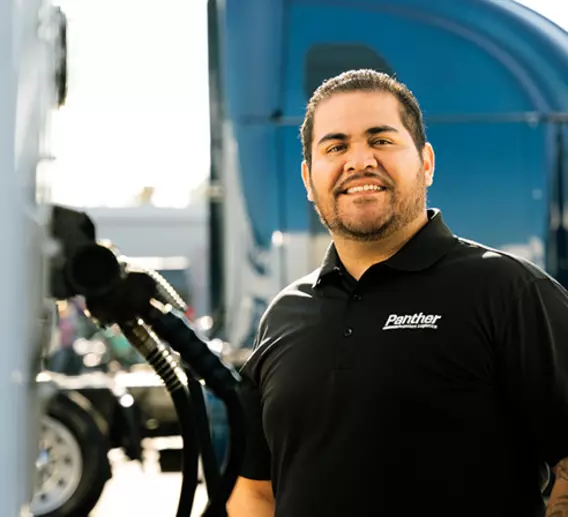A hands-off approach to hauling freight
If you’ve spent time around the trucking industry, you’ve likely heard the term “no-touch freight” used in conversation or seen it in job listings. But what exactly does it mean? And why does it matter for drivers? Let’s look closer to find out what it is and what drivers who haul no-touch freight can expect.
What is no-touch freight?
No-touch freight refers to shipments that require minimal or no physical handling by the driver throughout the transportation process (while “touch freight” implies the opposite). In this scenario, the responsibility of loading and unloading rests with the shipper and the shipment recipient. The shipper properly packages and loads the cargo onto the trailer, and once it’s loaded, the driver’s primary role is to transport the freight from the pickup location to the destination. The recipient at the destination handles unloading.
Depending on the circumstances, all types of freight can be no-touch — anything from materials that require special handling to time-sensitive freight. Shippers may prefer it for various reasons, including time efficiency, reduced damage risk and streamlined operations.
Benefits of hauling no-touch freight
There are several reasons drivers may prefer no-touch freight, including the ability to reach their destination promptly without the additional time and labor associated with loading and unloading. Other reasons it may be an attractive option include:
Safety considerations
With no-touch freight, drivers don’t handle goods on a loading dock or in a warehouse. Their only focus is safely moving the load from point A to Point B. Once they arrive for pickup or delivery, a team of dock workers does the loading and unloading, which means the driver isn’t responsible for mishaps or damage.
Fewer physical demands
For drivers with physical limitations, loading and unloading freight may not be feasible. With no-touch freight, the driver isn’t responsible for lifting or moving cargo or operating machinery like a forklift.
Earning potential
No-touch freight can increase efficiency by streamlining responsibilities and giving the driver a quicker start on their next run.
A bit of downtime
When others handle the freight, it frees the driver up to take care of other things — or to relax and recharge.
What’s the difference between no-touch and drop-and-hook?
“No-touch” and “drop-and-hook” are sometimes used interchangeably, but not all no-touch freight is drop-and-hook freight — the key difference lies in the level of physical handling involved. No-touch freight requires no physical handling throughout the transportation process, while drop-and-hook consists of the exchange of pre-loaded trailers without the need to handle the cargo.
Generally, the shipper loads no-touch freight onto the truck, remaining untouched until it reaches its destination. Drop-and-hook involves a driver “dropping” an empty or already loaded trailer at a designated location and “hooking” onto another pre-loaded trailer at the same or different place. The driver doesn’t handle the freight, but they are responsible for detaching one trailer and connecting to another.
Is transporting no-touch freight right for you?
Some drivers prefer no-touch freight because of its simplicity. Hauling no-touch freight is typically a seamless process with fewer physical demands, less personal interaction and more time spent behind the wheel. However, some prefer the physical nature of touch freight because they enjoy regular physical activity, social interaction and longer breaks from the road. Ultimately, it’s up to you to decide what aligns best with your goals and preferences.
Pursue your driving passion with Panther
The Panther network is made up of independent owner-operators who provide industry-leading ground expedite shipping solutions that are critical to keeping the supply chain moving. Benefits include 99% no-touch freight, weekly settlements and a competitive compensation package. Learn more about all the ways you can drive for Panther.

